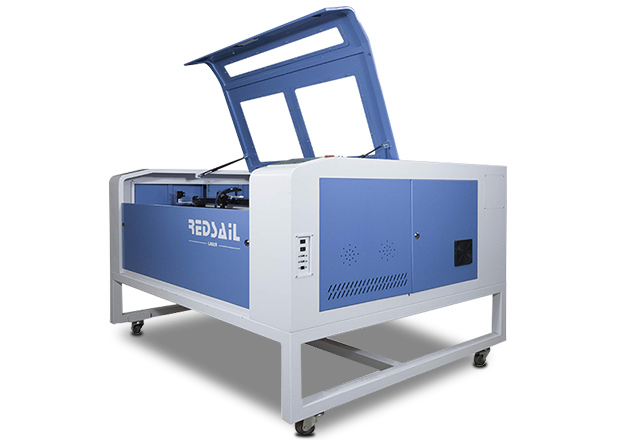When the laser cutting machine is used for a period of time, the laser lens will have film peeling, metal residue, dents, scratches, etc., which will greatly reduce the function of the laser cutting machine. Replace the protective lens with a new one in time. So what should be paid attention to when installing laser lenses?
- You need to wear rubber gloves when taking out the lens. The oil on the skin will contaminate the lens and affect the performance of the lens.
- When handling the lens, you can only gently pinch it with your hands, and do not use hard tools such as tweezers.
- When the lens is temporarily stored, it needs to be placed on a special lens paper to avoid scratches during storage and removal.
Precautions for lens cleaning:
- Use an air ball to blow off the lint, dust and floating objects on the surface of the lens. Do not use compressed air. The compressed air contains a high amount of oil and water, which will seriously pollute the protective lens.
- Use a cotton swab or cotton ball dampened with propanol, and slowly and gently clean the surface of the lens. When wiping the surface of the lens, it needs to be wiped as soon as possible, which is conducive to the volatilization of propanol and will not leave streaks.
Note: ① Use cotton swabs with paper handles and high-quality surgical cotton balls. 2) Reagent grade propanol is recommended.
- To moderately clean moderate pollutants, such as oil stains or sweat stains, moisten a cotton swab or cotton ball with white vinegar, scrub the surface with a small force, and then wipe off excess white vinegar with a dry cotton swab. Immediately then dampen a cotton swab or cotton ball with acetone and gently wipe the surface to remove residual acetic acid.
For lenses that are still ineffective after cleaning with the above cleaning process, it may be that the film layer of the lens has been wiped off, and the lens has lost its function. If the color of the lens changes significantly from the original lens, it means that the film layer has fallen off.
- For those extremely polluted lenses, such as serious metal spatter, we use a polishing paste to remove these pollutants. Shake the polishing paste well, pour 4-5 drops onto the cotton ball, and let the cotton ball move in a circular motion on the lens. There is no need to press down on the cotton ball, the weight of the cotton ball is enough. If too much pressure is used, the polishing paste will scratch the surface very quickly. Flip the lens frequently to avoid over polishing in one direction. The polishing time should be controlled within 30 seconds. Anytime a color change is noticed, stop polishing immediately, indicating that the exterior of the coating is being corroded. Toothpaste can be used without polishing paste.
- Wet a new cotton ball with distilled water, and gently wipe the surface of the lens. Wet the entire lens to remove as much residual polishing paste as possible. Be careful not to allow the surface of the lens to dry out, as this will make it difficult to remove the remaining polish.
- Quickly wet a fluffed cotton swab with propanol, gently clean the entire lens surface, and remove as much residual polishing paste as possible. NOTE: If the lens is more than 2 inches in diameter, use cotton balls instead of cotton swabs for this step.
- Wet a fluffed cotton swab with acetone and gently clean the lens surface. Remove the polishing paste and propanol left over from the previous step. For the final wash with acetone, a cotton swab is gently swiped across the lens, overlapping, until the entire surface is wiped. For the final scrub, move the swab slowly to ensure that the acetone on the surface dries quickly. This eliminates streaks on the surface of the lens.
- The last step in the inspection of clean lenses is to carefully inspect the surface of the lens on a black background under sunlight. If you find that there is still a residue of polishing paste, you can repeat it until it is completely removed. Note: Some types of contamination or damage cannot be removed, such as metal spatter, dents, etc. If the lens is found to have such contamination or damage, then you need to repair or replace the new lens.





